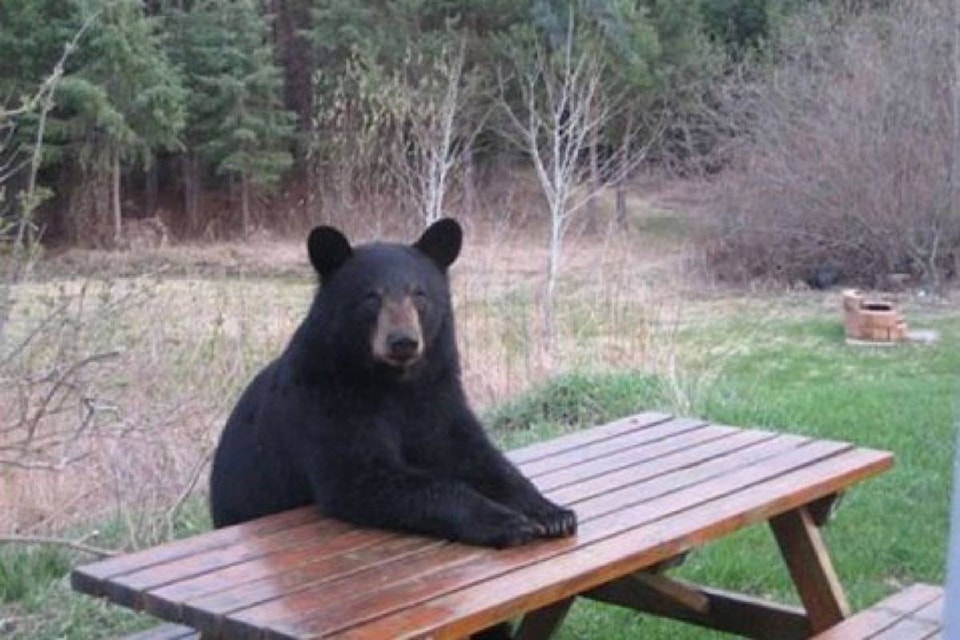By Ken Alexander
Ashcroft, Cache Creek, and other area residents need to remember that bears are in their extreme eating mode at this time of year.
“They need approximately 20,000 calories a day to fatten up for their little stint of winter hibernation,” says provincial WildsafeBC co-ordinator Vanessa Isnardy. The need for bears to consume that many daily calories can sometimes drive conflict behaviour if there is a lack of natural foods, she explains.
Berries, huckleberries, any berry-producing plant, nuts, and fish are very important for bears, Isnardy says, but if they get a high-calorie reward in a community from unsecured garbage, fruit trees, or even birdseed, they are going to be around. Wildlife is naturally wary of humans, but if they receive the reward, they will consider coming back again.
“Bears become more active at night when people are asleep, and that’s when they come back into the communities because the risks are lower for them,” says Isnardy. “As they become more comfortable and human-habituated, that behaviour becomes more troubling because they start coming around in the daytime.”
Isnardy asks the public to call the Conservation Officer Service (1-877-952-7277) and report when they see a bear in the area.
“They need to be aware there are more and more bears. They [the COS] keep track of the information and everyday we have that uploaded on our website at https://warp.wildsafebc.com/warp/ [Wildlife Alert Reporting Program]. People can see their reports on our interactive map and they can zoom right into their street if they want to.
“[The reports are] not just for bears. They’re also for cougars, wolves, coyotes and skunks – you name it.”
Isnardy says attractants are the biggest problem. That’s the number one thing we can do to make a difference, she adds.
“People often wonder how they can have a positive impact on wildlife. It’s not very glamorous … making sure there’s no access to non-natural food.” That includes fruit trees as well, she explains.
“People have to understand that fruit trees draw wildlife to our communities. Bears are very smart creatures of habit, and once they learn a behaviour, they can’t unlearn it.”
This is why people are encouraged to report sightings, because if attractants aren’t being managed properly, WildlifeBC can provide education services to residents if there enough sightings in a specific area. The organization wants to break the cycle of cubs learning conflict behaviour from the sows, Isnardy notes.
She says there is a lot of information about handling attractants on www.wildsafebc.com, including garbage, fruit trees, gardens, and compost best practices. The website also has safety tips and videos, including a guide to carrying and using bear spray when walking in bear country. Bear spray has been proven effective against black bears and grizzly bears, as well as cougars.
Isnardy adds there are a lot links for families and children that are both educational and fun, including the popular Junior Rangers program. “We also have safety information, like what do you when you see a cougar, bear, or a wolf.
“The general rule of thumb is if you see an animal, you never run and you never scream. We want people to stay calm and back away slowly.”
With the wildfires we’ve had in the past couple of years, what is the status of bears?
“It varies throughout the province,” says Isnardy. “We’re still trying to get a lot of that information, and all of our co-ordinators are working on their reports and summaries right now.
“So we don’t have a very clear picture yet … overall, the numbers of wildlife conflicts are actually lower than usual in the whole province this year.”
editorial@accjournal.ca
Like us on Facebook and follow us on Twitter
